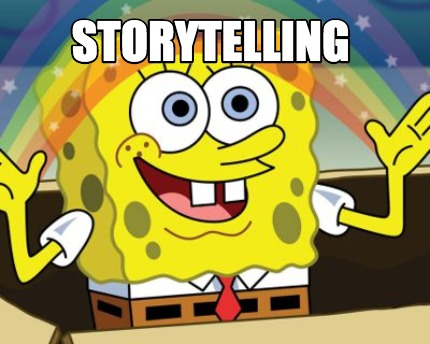Email marketing is a powerful tool for businesses. But if you’re not careful, your emails can come across as spammy and push people away from your brand rather than pull them closer. Fortunately, there are ways to make sure that doesn’t happen!
It’s no secret that storytelling is one of the best ways to engage with customers, mainly in email marketing. But it can be intimidating to tell a story through an email without sounding cheesy or unprofessional.
Suppose you’re struggling to be charming and authentic in your emails. In that case, we’ll show you how to use email marketing as a way to enrich your relationship with customers and prospects by crafting compelling stories they can’t wait to read.
How To Be A Charming Storyteller?
If you want to convey a message or tell a story, it’s essential to create and maintain the right mood.
A charming storyteller knows how to adapt their tone of voice and mannerisms depending on whom they’re writing the email. People are more likely to pay attention when you’re friendly with them instead of if you come off as a cold email.
The key to being a charming storyteller is that you must listen and engage others. Being a good listener will help you practice skills, such as active listening and asking questions that move the conversation forward.
Since everyone loves a good story and, as marketers, we are always trying to tell those stories in the best way possible. Here I am going to share with you a few tips on how to be a charming storyteller.
Tips for Becoming a Charming Storyteller:
- Start with a hook: A hook is an effective tool to draw the listener’s attention to create interest and enthusiasm. The best way to do this is by starting with a personal story that will hook their attention. They’ll not only listen, but they’ll also travel with your story.
- Be clear: The best way to engage your audience is to be clear in what you are trying to tell them. The clearer you communicate what you have to say, the higher the chance of getting it across effectively.
- Personalize: Personalizing the stories are a great way to connect with your audience. It’s an integral part of any marketing strategy, and it can help you build trust and credibility for your brand. So the only thing that matters is narrating your experience and connecting the audience in your journey.
- Highlight emotions: Involve the reader’s emotions. Stimulating emotions such as happiness, pain, surprise, and anger can help get the reader’s attention. Rather than just telling the facts, integrate an emotional element into your story.
- Less is more: Avoid extra words “I like,” “uh,” “you know,” and focus on delivering a more precise and easier to understand story that your audience will appreciate. Maintain the length and style of the story so that people don’t get bored; pay attention to it.
Why Does Storytelling Work In Email Marketing?
Email is a powerful marketing tool. It has a high open rate, and it costs next to nothing to send a campaign.
However, many businesses neglect one of the most critical aspects of successful email marketing: Storytelling.
Storytelling works for email marketing because it helps you connect with your audience emotionally, which increases your chances of making a sale.
There have been many articles written about the power of storytelling in email marketing.
Harvard studies prove that people remember stories more than facts, and they are more likely to share a story with someone else.
The reason why storytelling works so well is that it makes people feel something.
A story can convey emotion, build trust, create connection—all things necessary for building meaningful relationships with your customers.
5 Tips To Make Your Email Marketing Better With Storytelling
When it comes to making a lasting first impression, email marketing reigns supreme. From the subject line to the call-to-action, email marketers have one goal: to encourage recipients to engage with their content. And here are five tips to make it much better with storytelling.
1. Select a Relatable Lead Character

Email marketing is an essential part of any small business’ strategy for increasing revenue and acquiring new customers. The key to effective email marketing is relatability.
When creating an email marketing campaign, choosing the main character that the audience can relate to is essential. This will help the reader see themselves in the story you are telling and become more invested in your brand’s mission.
By choosing a relatable main character for your email marketing campaigns, you can increase click-through rates and gain valuable insight into better connecting with your customer base.
So you must select a character (persona) who will help the audience grasp your story and make it appealing. This character should be entertaining and well-defined enough to leave an impression on people’s minds.
For example, you should choose characters who are familiar to your customers, such as the hero, protagonist, adventurer, or leader, who gives a face to your plot and leaves an imprint in the minds of the audience.
2. Put the Best Part First
Every email you write has a set of goals. Whether it’s to pitch a client on a new idea, pitch an editor on a story idea, or pitch your brand at the top of the inbox, every email has goals—and those goals can be measured.
Put the best parts of your email first so that you don’t save the best for last. You want to capture the reader’s or viewer’s attention right away and compel them to click the links on your emails.
Significantly, the beginning of an email is the most crucial part of any marketing email. This section comprises the first three sentences and represents roughly 40% of your entire message, so it makes sense to spend time crafting an excellent start for your emails.
Not to forget the subject line, one of the most crucial elements of any email. The best email subjects are short and catchy but also informative. They include the message’s primary purpose and who it’s from while also sparking curiosity about what’s written in the email itself.
For example, Rather than just a “How I become an entrepreneur,” try something like “How to Make $100,000 a Year.” The second subject line is significantly better since it puts the best part of your email.
3. Relationship Between Listening and Telling
Email marketing is one of the best ways to communicate with your customers. Email marketing provides an opportunity to connect with them, which sets you apart from your competitors.
There are two types of writing in email marketing: telling and listening.
The first focuses on you, the sender, telling the reader about your product or service and why it’s great.
The second type is a little more subtle – a style that depends less on words and more on emotional cues to get your message across.
The relationship between listening and telling us brings you closer to your audience than just talking at them. This makes it easier to tell them what they need or want to hear, thus creating more opportunities for your business, website, blog, etc.
If you want to stand out from other emails in people’s inboxes, you have to understand the relationship between these two writing styles.
However, the goal of email marketing is to generate revenue by increasing sales. The success of email marketing lies in proper, targeted, and relevant content. The relationship between listening and telling can be very effective for your business growth.
4. Keep Your Email Authentic Through Storytelling

Email marketing is an essential tool for any business. Emails have the highest deliverability rate of any marketing channel and cost less than most others. As a means of building brand awareness, emails also offer some unique opportunities to be creative with your storytelling.
In the world of marketing, storytelling is one of the most effective ways to establish your brand. There are different types of stories you can tell, but I’ll focus on two: The first is messaging that describes your company’s products or services, and the second type is storytelling that showcases your brand’s culture.
A great way to keep your email authentic is by including stories from others—and pull the correct details into the spotlight.
As a marketer, storytelling is something that you should frequently do. You can create exciting content that will delight your audience and help them connect with your business through storytelling. It’s also a great way to present information in a fun and straightforward manner.
If you wanted to capture your listeners’ attention, you would add some humor or drama to keep them engaged. Whether it’s an email about recovering your abandoned carts or how your dog can open doors, if you’re telling the story in person, the audience has no choice but to listen because they can’t turn away from what you’re saying.
5. Leverage Storytelling and Autoresponder Emails Together
As you know, stories are a very powerful tool in the marketing realm. They can help you connect with your customers on a more personal level, and they can also help you sell your products and services.
Since stories stick in people’s minds longer than facts do, using them in autoresponders is a great way to impact customers so that they will be sold on what you’re selling.
Stories in welcome emails, abandoned cart emails, and confirmation emails build a connection between your business and the consumer. They also provide a sense of credibility, helping to establish trust. Consumers prefer stories over data when making decisions.
A well-crafted story can help you create an emotional response from your readers. This can help you increase sales and get more subscribers through email marketing campaigns. So if you’re not already using stories to drive results in your marketing efforts, then it’s definitely time to start! Look at this well-crafted abandoned cart email:
Wrap Up
Storytelling is an art. You can reach your target audience through storytelling, but it’s important to remember that you are not trying to sell something in each email. Since most people think marketing emails are impersonal pushy and they usually end up in the trash.
If you want to stand out from your competition, be a charming storyteller instead. Your aim is to entertain and build trust with your brand. Use words that evoke an emotional response and entice readers with a visual image. This will help you create a memorable brand persona, increasing conversions, and growing your email list over time! If you keep this in mind while crafting your next email, you will see better results.





